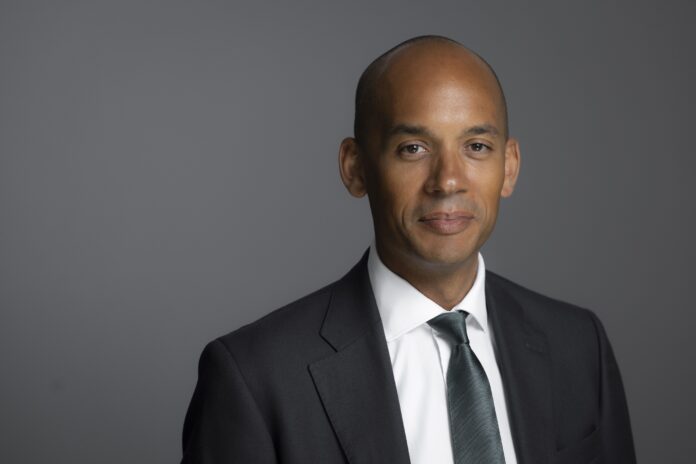
Is climate change considered, or growing as a factor in your regional credit risk calculations?
All of JPMorgan’s businesses are required to examine the activities they are responsible for and to identify, discuss and escalate the associated risks, and this includes climate-related risks. Over recent years, we have enhanced our risk management processes to understand the different ways in which climate change can manifest not just as credit risk but also as strategic, investment, market and operational risk types.
To assess climate risk, we have developed a classification system that describes how climate risk drivers could translate into potential impacts to our clients, our exposures and our operations. In respect of credit risk specifically, we consider whether factors such as shifts in consumer preferences to low-carbon goods and services, or changes in policy, or technological advances, are likely to jeopardise the viability of certain business models. If we think there is a climate-driven risk, this is then built into the credit risk calculation.
This is our global approach to climate-related risk and it applies to our businesses operating in the Middle East and Africa (MEA) region. In applying the global approach to the region, there are likely to be location-specific factors that we need to weigh more heavily than in other areas of the world. For example, from a physical climate risk perspective, in parts of MEA we might be required to put greater emphasis on the impact that increased water scarcity could have on manufacturing output, relative to a similar assessment in a different part of the world, based on what we understand from climate models.
Could COP 28 have a lasting effect on the way that your business will operate in the region?
It’s really exciting to think about the opportunities that COP28 will bring for the MEA region, building on a successful COP27 in Egypt. Clients in the region have been paying considerable attention to sustainability and ESG for some time, but ahead of COP28, we’re seeing clients sharpen their focus on sustainability issues in general and the energy transition in particular, to fully seize the opportunities the transition will bring.
Looking ahead to COP28 itself, I think we are likely to see a focus on how to scale the technologies required to increase renewable energy generation, as well as the transformation of food and agriculture systems. Another priority issue is likely to be climate adaptation finance, which is particularly relevant as countries in the region consider how to adapt to challenges brought about by the effects of climate change, such as rising sea levels, biodiversity loss and increased instances of heat stress.
In terms of our business, while COP28 is likely to bring a renewed focus on climate and sustainability, we already have a strong track record of partnering with our clients in the region and helping them to evolve their business models to take advantage of the wealth of opportunities the lower-carbon economy will bring. I’m looking forward to getting together with businesses and policymakers from across the region in Dubai later this year to collectively move forward in our efforts to address the challenges of providing clean energy solutions at scale, while at the same time ensuring we are delivering energy that is secure, reliable and affordable. I am very hopeful that COP28 will leave a strong legacy for the region, underscoring the important role it has to play in helping the world to transition.
Are you experiencing increased client or customer demand for more environmentally positive products?
Globally across our businesses we are witnessing sustained, strong demand for products and services that have a positive environmental and/or social impact. To give just two examples, that ranges from our asset management business, where we offer investors a range of ESG funds, through to my team in the investment bank, where we work with corporates to help them integrate ESG factors in their businesses and help them access ESG and sustainable-focused capital.
We are seeing clients in the region express a strong demand for ESG products and services, and we have observed a positive reaction from investors in the region and elsewhere in response to the sustainability leadership shown by a number of Gulf states. MEA-focussed investors tend to have a strong understanding of the strategic importance of the transition away from fossil fuels, particularly for countries which have historically relied heavily on hydrocarbon exports.
Investors have welcomed the articulation of net zero commitments and strategies by the Kingdom of Saudi Arabia, Qatar, the UAE and other sovereigns in the region, which have set out paths to a greener economic future. Such targets and plans provide platforms for state-owned entities and other corporates to bring ESG-labelled deals to market. As an example, JPMorgan led the issuance of the Saudi Public Investment Fund’s $3bn green bond issued in October 2022. ESG-labelled bond issuance in the MEA region was approximately $8bn overall in 2022[1] and it’s likely that we will see demand grow as investor confidence in the region’s ESG credentials increases.
Could the global cost of living crisis reduce the resolve of customers and clients to stick to more sustainable investment options?
The cost of living crisis is having a huge impact on the lives of many around the world, with people facing incredibly difficult circumstances brought about by an increase in energy and food prices. This is a philanthropic focus area for JPMorgan this year and we have recently committed £1.5m to three UK charitable organisations working to support communities in need as part of a larger $5m global commitment. Long term, I am not of the view that the cost-of-living crisis will reduce demand for sustainable investment; it may in fact do the opposite as investors seek to help address societal inequity through their investments.
Considering the bigger picture, the growth of sustainable investing we have witnessed over recent years has been a result of a strong desire from investors to deploy capital for a more positive influence, across a range of environmental and societal factors. There is also a growing body of academic research that suggests over the long term, integration of sustainability factors into investment strategies can deliver better returns. So while there are bound to be periodic challenges to sustainable investing, in my view these will tend to be relatively short-term in nature and will be outweighed by long-term, structural demand from asset owners looking for a range of ESG-aligned investment opportunities.
That said, we have seen some strong headwinds over the past year. Morningstar data has shown that global ESG AUM (as of Q3 2022) have declined by 24% since the start of 2022 as a result of value depreciation, which is primarily linked to ongoing geopolitical events and the energy crisis. This is a recent trend that has prompted the suggestion that ESG is in decline – but in reality, net flows to ESG funds largely outpaced those of conventional funds in 2022.
Looking forward, the financial materiality of environmental and social themes, from climate change to the loss of social cohesion, will likely accelerate rather than decelerate in the coming years, prompting more regulatory and policy initiatives, and supporting demand from asset owners.
Are you witnessing growth of new businesses, ideas and methods that will profit from a move toward climate friendly commerce?
Transitioning to a lower-carbon economy will not only steer our planet away from the worst damages of climate change, but also will bring an abundance of growth opportunities and new sources of prosperity. In this respect, there is a great deal for the MEA region to feel optimistic about as it looks to the future, not least as it has the potential to become a major future supplier of sustainable energy to global markets. The region is strong in terms of the prerequisites it possesses in renewable energy potential, specifically its existing export infrastructure and financing resources. In particular, green hydrogen and its derivatives bring enormous promise. There are already nearly 50 green hydrogen projects already underway in the MEA region, with Oman, the UAE and Egypt leading the way.
Looking specifically at Africa and its significant future energy demands as living standards and prosperity increase, there is scope to meet energy needs in large part through renewable energy. This would not only reduce future greenhouse gas emissions but also bring attractive investment opportunities and, with the right investment in skills, many jobs too. To illustrate the point, consider that Africa is home to 60% of the best solar resources globally, yet only 1% of installed solar PV capacity [Source: IEA]. This is just one example of the fantastic potential the region possesses. Analysis from the International Renewable Energy Agency shows that renewables and other transition-related technologies have already created 1.9 million jobs across Africa, a number that will likely grow substantially as countries further invest in the energy transition, to an estimated 9 million additional jobs by 2030.
Across the entire MEA region, there is plenty to be excited about as we look ahead to COP28 and the economic opportunities the low-carbon transition brings that lie beyond.
[1] Source: Bondradar










